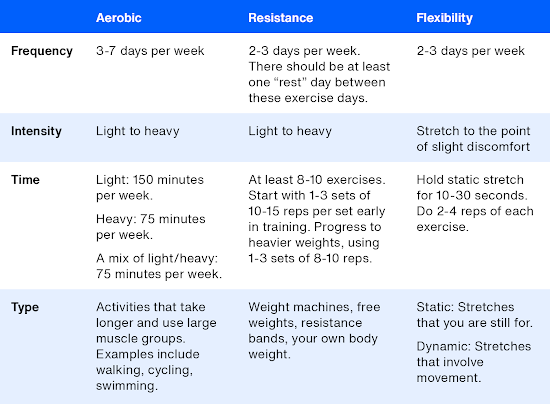Managing Diabetes Mellitus through Physiotherapy: Prevention and Treatment
Every 5 out of 10 older adults in Asia suffer from Diabetes Mellitus. The prevalence of this illness spans across the globe. Diabetes can affect anyone at any age & it may pose some serious physical challenges. Management of this disease is as important as healthy eating.
What is Diabetes?
Diabetes refers to a collection of persistent metabolic conditions that cause unusually high levels of glucose (sugar) in the blood, also known as hyperglycemia. Glucose is the primary source of energy for the body and requires the hormone insulin, produced by the pancreas, to enter cells. In individuals with diabetes, either the pancreas fails to produce enough insulin or the body cannot properly utilize insulin, leading to elevated glucose levels.
Types:
There are 3 main types of diabetes.
- Type 1 - Insulin Dependent Diabetes Mellitus. The body is incapable of producing sufficient insulin in this condition. It is an autoimmune disorder. It is also known as Juvenile diabetes. 10% of the cases are Type 1 DM.
- Type 2 - Insulin Resistant Diabetes Mellitus. When the body is unable to properly utilize the insulin it produces. 90% of the cases are of Type 2 DM.
- Gestational Diabetes (GDM) - This is characterized by high blood glucose levels during pregnancy. Blood glucose levels come back to normal after giving birth. There is a 60% chance that a pregnant woman may get GDM.
Another type of diabetes is prediabetes. In this type, the levels of glucose are normally high in the blood but they are not high enough to be diagnosed as diabetes. It is a pre-stage to the diagnosis of diabetes and from here diabetes can be prevented.
What are normal and abnormal blood glucose levels?
Normal Blood fasting glucose levels, i.e., testing sugar level without eating anything for 16 hrs is 70-99 mg/dL. For patients suffering from diabetes, these levels may rise up to 130 mg/dL (100-130mg/dL).
Normal Blood Random Glucose levels, i.e., sugar levels 2/3 hours after the meal (postprandial), for a healthy individual, are 120 - 140 mg/dL while, for a diabetic patient, they may range from 150 - 200 mg/dL.
If the levels change above or below of average blood glucose range, they can prove to be fatal.
Causes of Diabetes:
For Type 1 diabetes, the cause is unknown. It may be related to genetics. Hence it cannot be prevented but it can be managed by PT and insulin injections.
Type 2 diabetes has various causes. They include cellular resistance to insulin, genetics, obesity, inactivity, low levels of HDL (the good cholesterol) & high levels of LDL (the bad cholesterol), Gestational diabetes, or prediabetes.
Gestational Diabetes is caused by hormonal factors. During pregnancy, the hormones change the uptake of Insulin and develop insulin resistance.
Signs & Symptoms:
- Slow healing wounds
- Frequent urination
- Tingling or numbness in extremities, especially legs.
- Polydipsia (excess thirst)
- Polyphagia (excess hunger)
- Blurry vision
- Unexplained weight loss
- exhaustion
- Vaginal yeast infection
- UTIs

Complications with Diabetes Mellitus:
- Cardiac Problems (Coronary artery disease)
- Stroke
- Hypertension
- Skin sores or ulcers.
- Diabetic Neuropathy (A nervous system disorder due to diabetes mellitus)
- Diabetic retinopathy (An eye disease leading to blurred vision or blindness)
- Kidney problems
- Diabetic foot ulcers
How Physiotherapy Helps in Diabetes Management?
As there is no proper cure for Diabetes Mellitus so it can be managed by physical activity. Exercise is proven to be helpful for diabetic patients in its prevention & treatment. Exercise maintains a person's weight by lowering fat deposits, the body's blood glucose levels (as muscles use glucose to produce energy), and maintaining blood pressure as well as cholesterol.
Physiotherapy can include a range of activities, such as resistance training, aerobic exercise, and stretching. These exercises help to improve insulin sensitivity, which can lead to better glucose control. Additionally, physiotherapy can help to reduce the risk of other health complications associated with diabetes, such as cardiovascular disease and neuropathy.
There are three levels of prevention of disease & for diabetes these levels include;
- Primary prevention - When a person is susceptible to diabetes, he can prevent or delay it through physical activity, a nutritious diet, and weight loss.
- Secondary Prevention - It involves early diagnosis and effective measures to control the progression of DM.
- Tertiary Prevention - It involves the prevention of disability and other diabetes-related complications with physical therapy.
Physiotherapy practice may help improve ADLs (Activities of daily life) for diabetic patients. The exercise regimen may include Aerobic/Endurance, Resistance/Strength, and flexibility exercises. These exercises include Walking, running, cycling, pilates, etc.
According to FITT protocol for a diabetic individual, the regimen may include;
 |
| FITT Protocol for Diabetic Patients |
Frequency: Frequency is how often something happens over a period of time.Intensity: the amount of energy or effort put into a task or activity.Time: the length of time for your exercise regimen.Type: The term pertains to the kind of physical activity one is engaged in, such as cycling, walking, stretching, weight lifting, and so on.
The treatment plan may differ depending on the individual. A physiotherapist will create the regimen and provide guidance on gradually improving.
Engaging in physical activity can lower the risk of developing diabetes and slow down its progression. To avoid foot ulcers, it's important to wear comfortable shoes. If you have a wound, make sure to clean it every day. If the wound doesn't heal in a few days, it's best to contact your doctor.
Also, read:


.jpg)
Very elaborative!
ReplyDeleteThat is a thorough piece of work.
ReplyDelete